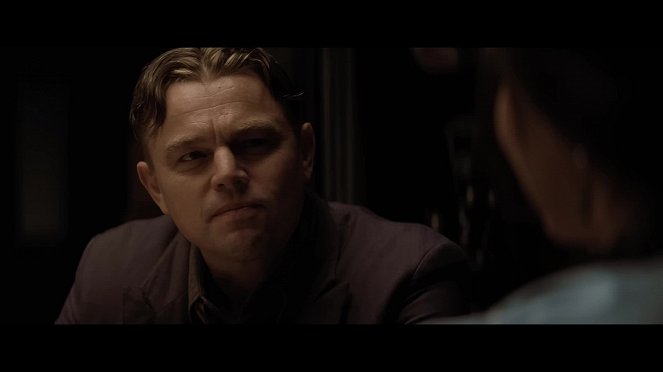Rendező:
Martin ScorseseOperatőr:
Rodrigo PrietoZeneszerző:
Robbie RobertsonSzereplők:
Leonardo DiCaprio, Robert De Niro, Lily Gladstone, Jesse Plemons, Tantoo Cardinal, John Lithgow, Brendan Fraser, Louis Cancelmi, Tatanka Means (több)Streaming (2)
Tartalmak(1)
A David Grann nagysikerű bestsellere alapján készült „Megfojtott virágok” az 1920-as évek Oklahomájában játszódik, és az olajból meggazdagodott oszázs indián nemzet tagjainak sorozatos meggyilkolását meséli el; egy sor olyan brutális bűneset krónikája, mely az amerikai bűnüldözés legsötétebb fejezete volt. (UIP-Duna Film)
Videók (20)
Recenziók (10)
Egy újabb Scorsese által tökéletesen megrendezett retró mű antihősökkel, akik korrupciótól és hazugságtól velejéig romlottak. És az áldozatok tragédiájával, immár klasszikusan érzelmi távolságtartással filmezve. Kivéve a főszereplőt, egy indiai nőt, akinek a megsemmisülése nem néhány másodpercig tartó fejlövéses jelenet. Ehhez szeretni kell Martin energikus elbeszélői stílusát. Nekem mindig is volt vele egy kis problémám. Robert De Niro királyi módon élvezi egy újabb manipulatív keresztapa szerepét, ezúttal egy jóságos bácsika arcával. DiCaprio szórakoztatóan variálja minden színészi védjegyét egy meghasonlott, negatívan ívelt szájú hülye szerepében. Brendan Fraser pedig egy nagyon kis szerepben tündököl. Lily Gladstone a minimalista színészi játékával és visszafogott tekintetével törékeny, odaadó és bizakodó. A brutális játékidő hozzájárul az epikus méretű film abszolút cselekményi komplexitásához, egyben növeli a szereplők és a körülöttük zajló események számát, melyeknek a záró összefoglalásában már egy kicsit elvesztem. A ritmikusan monoton, de a folyamatosan lüktető zenének köszönhetően élénk és baljósan fokozódó, ijesztő igazságtalanságról szóló elbeszélést üdítően felfrissíti a kezdő FBI-ügynökök felbukkanása, jellemző szakmai módszerességgel. A korabeli bűnözői csapatok nem voltak hozzászokva az ilyen törvényi taktikákhoz. Kedves meglepetés egy kámeaszerep az ünnepélyesen szerkesztett epilógusban. Úgy értve, hogy ünnepélyesen az Oscar-jelölés felé vezető úton.
()
The Osage nation has found oil in their territory and became rich. But where there is money, there are people who want to get their hands on it, and they will be going over dead bodies. Martin Scorsese delivers a dense drama about human envy, anger and cruelty that is not entirely audience-friendly and forces you to spend three and a half hours in the company of repulsive people. Leonardo DiCaprio and Robert De Niro give brilliant performances here, but the slow pace and a narrative that doesn't rush anywhere demand more attention and patience from the audience than usual. Scorsese is uncompromising, so be ready to do your fair share of time with his newest film. And he's certainly not going to make it easy.
()
Fargo 1920. It's not riveting, but it's undeniably excellent. It feels like a miniseries accidentally put on in one piece, two and a half hours of taking its time with everything in style, and in the final hour, after a change of style, it's conversely stilted. One of those films that should have either been considerably shorter (and left out entire lines) or, conversely, considerably longer (and fully committed to each).
()
Here, more than with other films, you realize that even great filmmakers should have a producer's oversight, someone to tell them that such monstrous running time is untenable. Martin Scorsese's seminal works always flirted with three hours, but they had incredible pacing and were watchable in one breath. Here, I was hooked only with the arrival of the investigators and the final catharsis, which was powerful, so it took like two horus for things to get going, and I write this as someone who likes slow films and their gradual introduction to the plot. Nasty things happen, but I felt almost no tension and the bland monotone music didn't help. And someone should tell Leonardo DiCaprio that constantly crabbing his mouth into an inverted U is not a sign of good acting. So aside from the traditionally reliable Robert De Niro, I was only impressed with Lily Gladstone. Her quiet strength, soulful expression and engaging minimalist acting was something to behold. I wouldn't hesitate to call her the heart of the whole film, the one element of goodness in the human filth around her. I'm glad to see that similar artistically ambitious films are still being made in these bastardised, tik-tok times, but I'm afraid Marty won't be expanding his Oscar collection this time around.
()
Martin Scorsese and Eric Roth have taken a muddled, mediocre book and turned it into a great American novel in film form. Killers of the Flower Moon is a monumental, multi-voiced and timeless chronicle of the fall of a community whose lust for wealth is stronger than love, even though its members are aware that they are preparing the next generation for the future through their own behaviour. The film is dark and slow and feels longer than The Irishman, for example, but that length is justified, as it makes it possible for us to gradually get into that community and see at first hand how greed and cynicism gradually and inevitably spread to the country, become entrenched and consume the characters. Throughout the film, we find ourselves in close proximity to a confident and seemingly all-powerful, yet essentially banal and sometimes comically obtuse evil whose proper punishment seems rather unlikely, which is exactly as frustrating and exhausting as Scorsese most likely intended it to be. By comparison, the voice of goodness is weakened by sickness and the “medicine” administered, and it is limited to naming the one who died (which is something of a Scorsese trademark). Despite that – and thanks to the dignity that Lily Gladstone radiates – it has a central, evidentiary role in the narrative. Killers is primarily an indictment of the murderers whose existence should ideally have been erased from American history (because many still profit from their crimes to this day) and an emphatic demand to give back a sense of humanity to those whose lives were reduced to a few thousand dollars decades ago; the director’s closing cameo leaves us in no doubt about this. ___ Scorsese directs his lament with the surehandedness of a master. This time, he economises on the spectacular dolly and Steadicam shots, instead relying on the actors and Thelma Schoonmaker’s feel for rhythm. As a message about the substance of American capitalism, his plunge into the darkness could eventually become an equally essential work as Giant (1956), Once Upon a Time in the West, The Godfather and There Will Be Blood. At the same time, the intense hopelessness and the atmosphere of irreversible decline reminded me of Tárr’s films. No, that won’t come easy in the cinemas for this proof that you can still make your magnum opus in your seventies. 90%
()
Galéria (109)
Photo © Apple TV+







Hirdetés